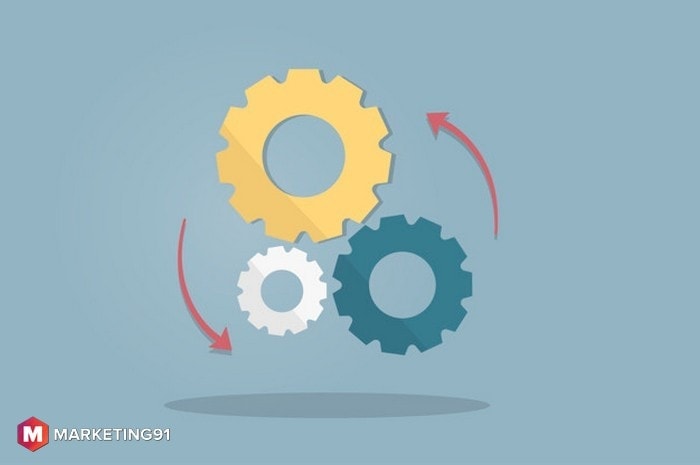
Pros and Cons of Centralization: A Comprehensive Overview

Centralization and decentralization are two opposite ways to manage an organization Centralization features top management making decisions, longer time to decide, and information flowing from top to bottom Its advantages include standardized processes, high productivity, and quick decision-making However, it also has disadvantages, such as less motivated employees, a controlled environment, and reduced productivity
Centralization and decentralization are two opposing methods of operating an organization. With centralization, a single individual holds the authority to make crucial decisions, while decentralization grants equal decision-making power to all members of the organization.
What is centralization?
Decentralization typically involves decision-making through a voting system. This article explores the concept of centralization, including its defining characteristics, benefits, and drawbacks.
Centralization refers to the concentration of decision-making power in the hands of one individual or a central location, where all important decisions related to the activities of an organization are made. To illustrate this concept, consider the analogy of a household.
If you grew up in a household where your father made all the important decisions related to the family, then you were raised in a centralized household. For instance, if you were never consulted for your input in choosing a vacation destination, it is a clear indication that your household was centralized in its decision-making process.
Do not despair, as that example was from a distant past. Let us refocus on our topic at hand. Centralization can manifest in both small and large organizations. For small organizations, the business owner is in charge of all major decisions. On the other hand, larger organizations with multiple branches that require uniform services also tend to adopt centralization.
The State Bank of India, a public sector bank with a global presence, serves as a prime example. With numerous branches worldwide, the bank's headquarters in Mumbai serves as the hub of decision-making and implementation for all branches.
If you are working in any such organization, then you must have heard now and then that a notice has been issued from the main office or head office.
Features of Centralization
#1. Top management:
Top management plays a crucial role in steering an organization towards success. They are responsible for making critical decisions related to the company's growth and development. Additionally, top management should also lend an ear to the grievances of their employees and provide effective solutions to address these concerns.
#2. Authority to make a decision is in the hand of top management only:
#3. Information flows from the upper level to lower levels:
While an organization has multiple levels of management to ensure smooth operations, the ultimate decision-making power lies with the top management. The lower levels of management are expected to follow and execute the decisions made by the top management.
In the organizations where the centralization process is followed, the information flows from the upper level of management to lower level of management.
The top management holds significant responsibility for making crucial decisions that are then executed throughout the organization. However, this process may have shortcomings, as the lower management may not have the ability to contest a decision made by the top management, even if they do not agree with it.
#4. Longer time to make decisions:
The hierarchical structure of organizations often results in the lower management having limited decision-making power. This means that even if they have effective solutions, they must seek approval from the upper management before implementing them. As a result, the employees of the organization are heavily reliant on the decisions made by the top management.
This protocol makes the process quite slow and ineffective.
#5. Centralization is suitable for a small organization:
AS centralization results in slow decision making. It is not suitable for large organizations and makes the decision process complicated.
#6. Inflexible in nature:
In contrast to larger organizations, small organizations with fewer employees and less management levels experience a faster decision centralization process. This allows for a quicker flow of information from upper management to lower levels and facilitates implementation.
Fragment 16 rewritten:
A downside to centralization is that top management, responsible for all decision-making, may lack awareness of the organization's actual operations and make ineffective decisions. In contrast, lower management may have better insight into the situation and be more capable of making effective decisions. Decentralized management systems can thus be beneficial in this regard.
Advantages of centralization
#1. Centralization provides a standardized process:
Centralization is a crucial factor in establishing a structured work environment within an organization. The top management not only assumes responsibility for making significant decisions on behalf of the company but also pays heed to the concerns and issues faced by the employees.
The hierarchical structure of the organization allows employees to escalate their concerns or suggest changes to top management. This well-established process ensures that decision-making and problem-solving are streamlined, as information is conveyed in a systematic manner and the ultimate decision rests with the authority.
#2. Better quality of work and high productivity:
#3. Experienced people to guide and take important decisions:
Under a centralized system, employees are aware that their actions and decisions are being monitored by top-level management, making them accountable for their performance. This accountability instills a sense of responsibility, leading to a higher level of productivity and better execution of their duties.
Top management individuals are often seasoned professionals with extensive business experience and a keen understanding of how to navigate challenging situations. They leverage their expertise and knowledge to make informed decisions that benefit the organization as a whole.
#4. Consistent focus on the vision of the organization:
To achieve its goals, every company needs a clear vision of where it wants to be in the future. However, consistent efforts are not always enough. A centralized or top management with power and authority to make decisions is essential for aligning the company's actions with its vision. With a focused approach, the company can work towards realizing its goals.
They will make all the employees of the company work so that the company’s goal can be achieved as soon as possible.
#5. Quick decision making and implementation:
With an increase in the number of decision-makers, the decision-making process tends to become prolonged. This is because each person brings their own opinion and objectives to the table, resulting in a variety of viewpoints. Consequently, the implementation phase also becomes more complex since those responsible for it are occupied with the decision-making process.
#6. Less costly:
In situations like these, centralizing decision-making can be efficient. The top management evaluates the advantages and disadvantages of each decision, while the rest of the employees focus on executing the chosen course of action.
Typically, individuals in high-level management positions are those who founded the business. This eliminates the need for the company to spend extra money on hiring outside experts to make strategic decisions.
On the other hand, in a decentralized organization, different departments are created, and experts are hired to decide for the company.
Here is a video byon Centralization.
Disadvantages of Centralization
#1. Less motivated employees:
Working in centralized organizations often leads to demotivation among employees. Despite possessing talent and skills, they are limited in their ability to showcase their full potential as they are required to comply with orders from top management. This sense of confinement can be discouraging, especially since employees understand that their hard work will not necessarily lead to advancement within the organization's upper echelons.
#2. Controlled Environment:
In a centralized setting, the authority to make decisions lies with the upper management, and the members of the organization are obligated to adhere to the directives issued by the management.
Employees in such situations are limited to following strict instructions, hindering their ability to tap into their creativity. The constant need for supervision can lead to employee frustration, ultimately impacting their productivity in a negative way.
#3. Less loyal employees:
Employees who are constantly being monitored and forced to take orders from higher-ups often feel disconnected from their organization, and can even begin to feel like they are slaves. This feeling of being undervalued and unappreciated can lead to disloyalty, causing employees to seek out other job opportunities and ultimately leave the organization as soon as a better opportunity arises.
On the other hand, employees who participate in important decision-making feel more loyal and stays with the organization for a longer time.
#4. Reduced Productivity:
This reliance on higher management can hinder the productivity of employees at lower levels. Waiting for decisions to be made and implemented can be time-consuming and ultimately lead to a decrease in efficiency.




















